Much like Elder Scrolls Legends before it, Fable Fortune takes an existing RPG franchise and gives it the Hearthstone CCG treatment.
In this current phase of Early Access, there are no tutorial missions that teach you specifically how the gameplay mechanics work or explain the board layout. You basically just have to play some practice missions and learn it all yourself — or you could read our complete Fable Fortune beginner’s guide below!
Fable Fortune Gameplay Basics
Although the board looks a little daunting at first, here’s the thing to keep in mind — if you’ve played Magic: The Gathering or any rounds of Hearthtone, you essentially already know how to play.
Deck And Card Layout
The top left gold number indicates the number of gold a card costs, while the next two numbers are the creature’s strength (the damage it deals when attacking or defending) and the creature’s health (the damage it can take before dying). Unlike in Magic, you can’t go above max health for your player in Fable Fortune, but you can pump health well above max for individual creatures on the board.
Beyond those basics, you just need to learn how the jargon has shifted in this particular CCG iteration:
- Gold serves the role of mana, starting each match with 3 gold and gaining 1 every round until the match ends
- Bound means Summoning Sickness, with creatures unable to attack during the round in which they are summoned
- Rush means a creature can attack the round it is summoned
- Big Entrance means something happens when the card is played
- Last Laugh means something happens when the card dies
- Stun prevents a creature from attacking next turn
- Safeguard means something happens if the creature gains the Guard attribute
- Guard means enemy creatures must attack this creature first, and if the Guarded creature remains, enemies can’t attack you or other creatures
However, there are four segments on the player side of the board that will be unfamiliar: the quest goal banner at the far left (see full info below), the gold chest indicating your number of gold (rather than mana), the shield Guard icon second from the right, and your class ability to the far right.
Any creature on the board can be given the Guard ability for the cost of 1 gold using the shield icon. Giving creatures Guard is frequently part of a quest, and many cards produce different effects when they are placed in Guard. Learning when and how to use Guard is critical to matches.
In most cases, you want Guard active on your healthiest creature so your opponent can’t hit you directly, but using Guard in connection with skills is equally important. For instance, if you have a creature with a Last Laugh ability that summons other creatures or that causes the base creature to automatically reanimate, that can be a better option for Guard than a creature with higher health.
Deck Building in Fable Fortune
Fable Fortune revolves around 30-card decks, with a pool of neutral cards that anyone can use, while the remainder of your cards must be chosen from your class card pool.
As with Hearthstone, always think about the gold cost distribution of your deck. Focus first on putting in plenty of 0 – 3 gold cost cards to keep yourself competitive at all stages, but with a handful of 6 – 8 cost for bringing out the big bruisers in the late game.
From there, fill in class-specific mid-cost cards that work toward your overall strategy. As with most CCGs of this nature, the key here is to focus on synergy, both with your other cards and with your class ability. A deck that builds on a particular strength with lots of cards revolving around one ability will typically do better than a deck crammed full of high-cost cards with good stats.
If you aren’t familiar or comfortable with a particular class yet, building a deck with synergy focused on neutral Hobbe or Bandit cards is always a quick and simple option.
Quests And Morality
There are two major changes to the formula with Fable Fortune: quests and morality. Before each match, you get to choose from a random assortment of quest paths. Completing particular quests will give you a bonus during the match, like getting a free card to play.
Quests involve objectives like summoning four creatures with a cost of 4 or lower, summoning four creatures with Last Laugh, putting four creatures into Guard mode, spending a certain amount of gold over the course of the match, and so on. The quest banner on the far left side of your board shows how close you are to completing the objective.
Obviously, tailor your quest options to your deck build. If you don’t use cards with Last Laugh, picking that quest isn’t particularly helpful.
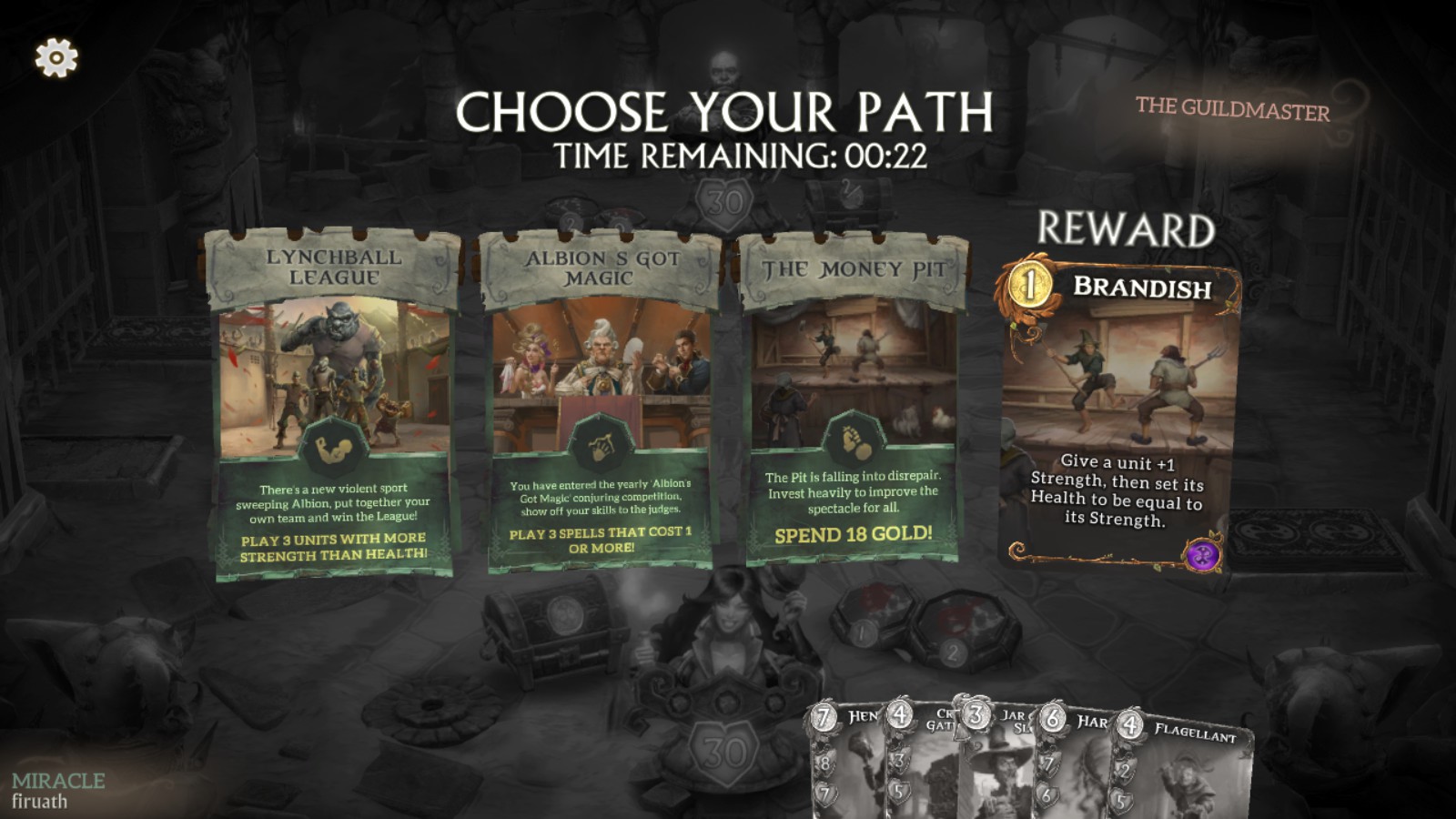 Choosing a quest path to get the Brandish card reward
Choosing a quest path to get the Brandish card reward
Pulling from the Fable universe staples, partway through the match time will come to choose between going good or evil, which powers up and changes your class ability.
For instance, the Gravedigger’s base ability is to summon a 1/1 creature with Rush that dies at the end of the turn. That’s helpful in the early game, but not so much later on. If you choose Evil however, the ability transforms into a 2/1 Rush creature instead, while the path of Good gives you two separate 1/1 Rush creatures.
Remember how I mentioned card synergy above? Morality adds another level to your synergy options. Cards like the late-game Treasure Hunter will transform into two different versions depending on whether you choose Good or Evil, while Bloodstone Blackguard gives a bonus to creature strength if you choose Good or creature health if you choose Evil.
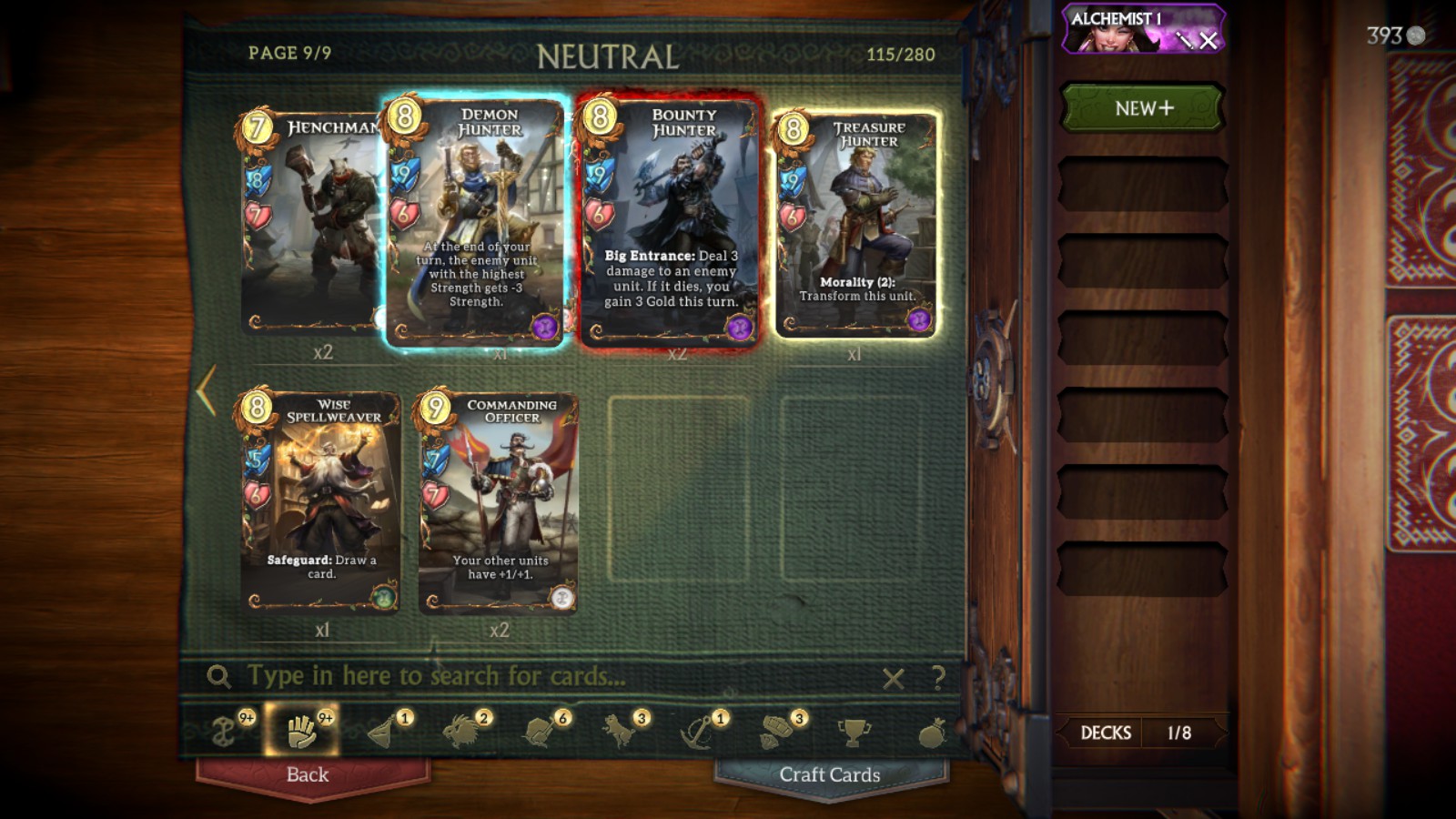 Different transformation options for Treasure Hunter
Different transformation options for Treasure Hunter
Classes in Fable Fortune
Much like the hero Classes of Hearthstone, every deck starts with one of six different Fable heroes focused on different abilities and strategies. Each has a different 2 gold cost ability, as well as specific strengths and weaknesses that will change how you play.
Alchemist Class
Base ability: Concoct (Add a random Vial to your hand with features like increasing health or strength to a creature)
This class is fun to play and has cool combos, but it also has some critical flaws. There aren’t as many board-clearing options and both the class ability and its many spells are dependent on you keeping your creatures constantly alive. If you lose board control, it’s very difficult to regain it and achieve victory in the late game.
Gravedigger Class
Base Ability: Exhume (summon a 1/1 creature with Rush that dies at the end of the turn)
This class utilizes hordes of Last Laugh cards that bring out more undead when your creatures die. There are two major paths to take here: focusing on board control by constantly summoning dead creatures and transforming stronger ones, or instead building your deck around cascading Hollowmen that frequently conjure more companions or trigger effects when they die. This is one of the top-tier classes, so if you are having trouble, trying Gravedigger is a good way to go.
Knight Class
Base Ability: Enrollment (summon a 1/1 peasant under your control)
Essentially the equivalent of the Plains deck from Magic, the Knight class focuses on summoning lots of small peasants and then triggering effects based on how many peasants are in play.
Like the Alchemist, there are limited board-clearing options here, with All Peasant And Correct your main option, turning all enemies and allies into 1/1 creatures. While you can get big, beefy creatures with a combo of Blacksmith + a horde of peasants, the problem is that your opponent will frequently whittle down your peasant horde before you get off a good combo.
Merchant Class
Base Ability: Haggle (add a gold piece to your hand)
The Merchant class is your classic control deck, focused on Silencing enemies or even stealing them off the other side of the board and putting enemy cards into your hand. Many of the Merchant cards can be pumped up if you spend extra gold, or instead offer the player extra gold to use in a variety of situations.
Prophet Class
Base Ability: Restore (heal a creature of 2 health)
An all-around excellent pick for the beginner, the Prophet class is frequently better at board control than the Merchant, letting you lower enemy strength and remove their ability to Guard. All of your creatures will constantly have high health, and many of them get bonus strength when healed as well. Go forth and spread the good word with your armies!
Shapeshifter Class
Base Ability: Rend (deal 1 damage to an enemy creature)
If there’s a clear best class, its almost certainly the Shapeshifter, who can easily dole out loads of damage with cards like Ambush, Stunning Slash, Snarling Lunge, and Surge of Fangs. Even tiny cards like Feral Squirrel can become powerhouses as you damage the enemy or cast buffing cards. The Stun ability of a huge range of cards also gives decent board control options.
Those are all the basics you need to know to get started in Fable Fortune! Stay tuned for full guides on deck building for each class, and be sure to let us know any tips you’ve learned for winning matches!


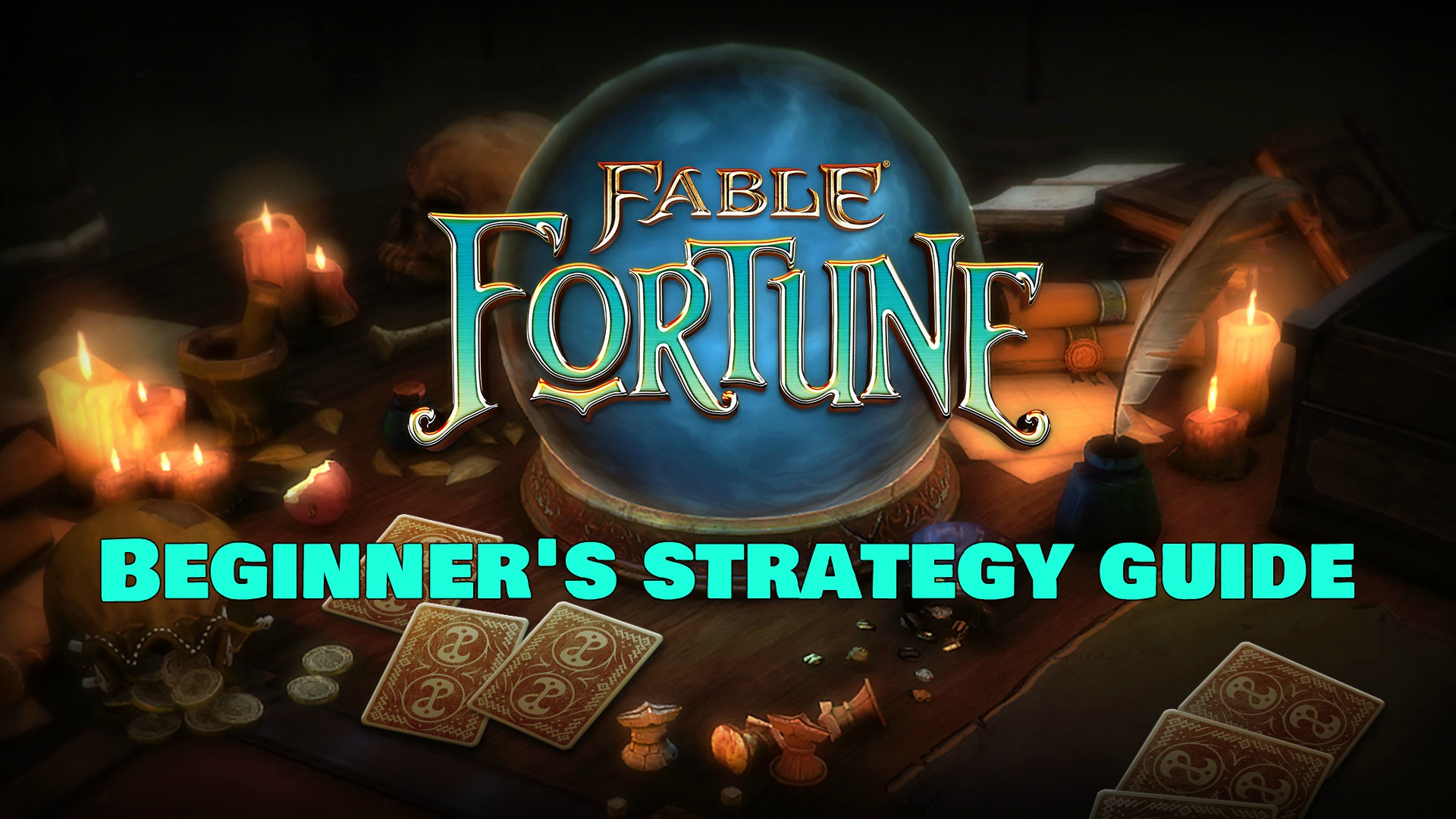
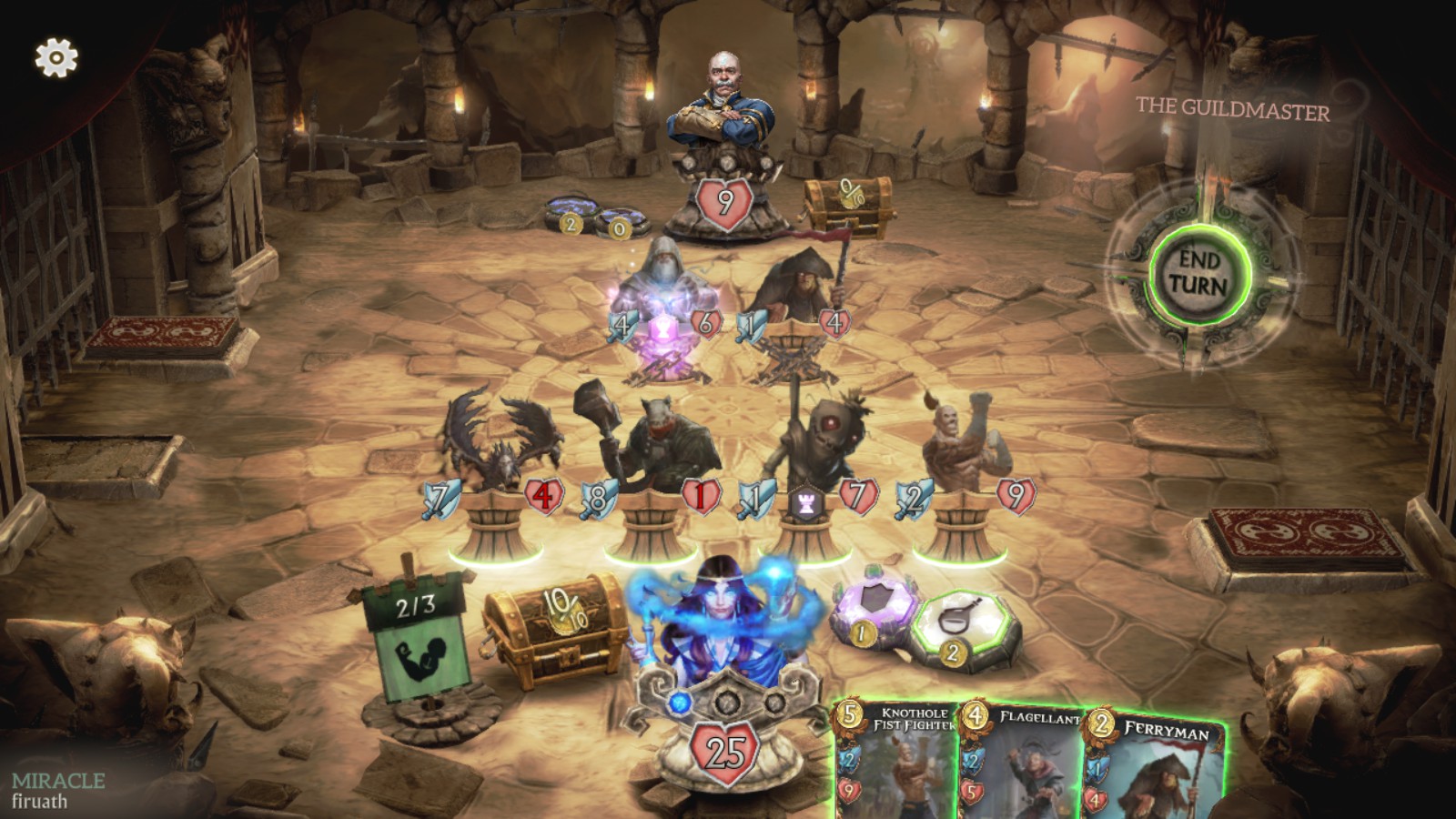
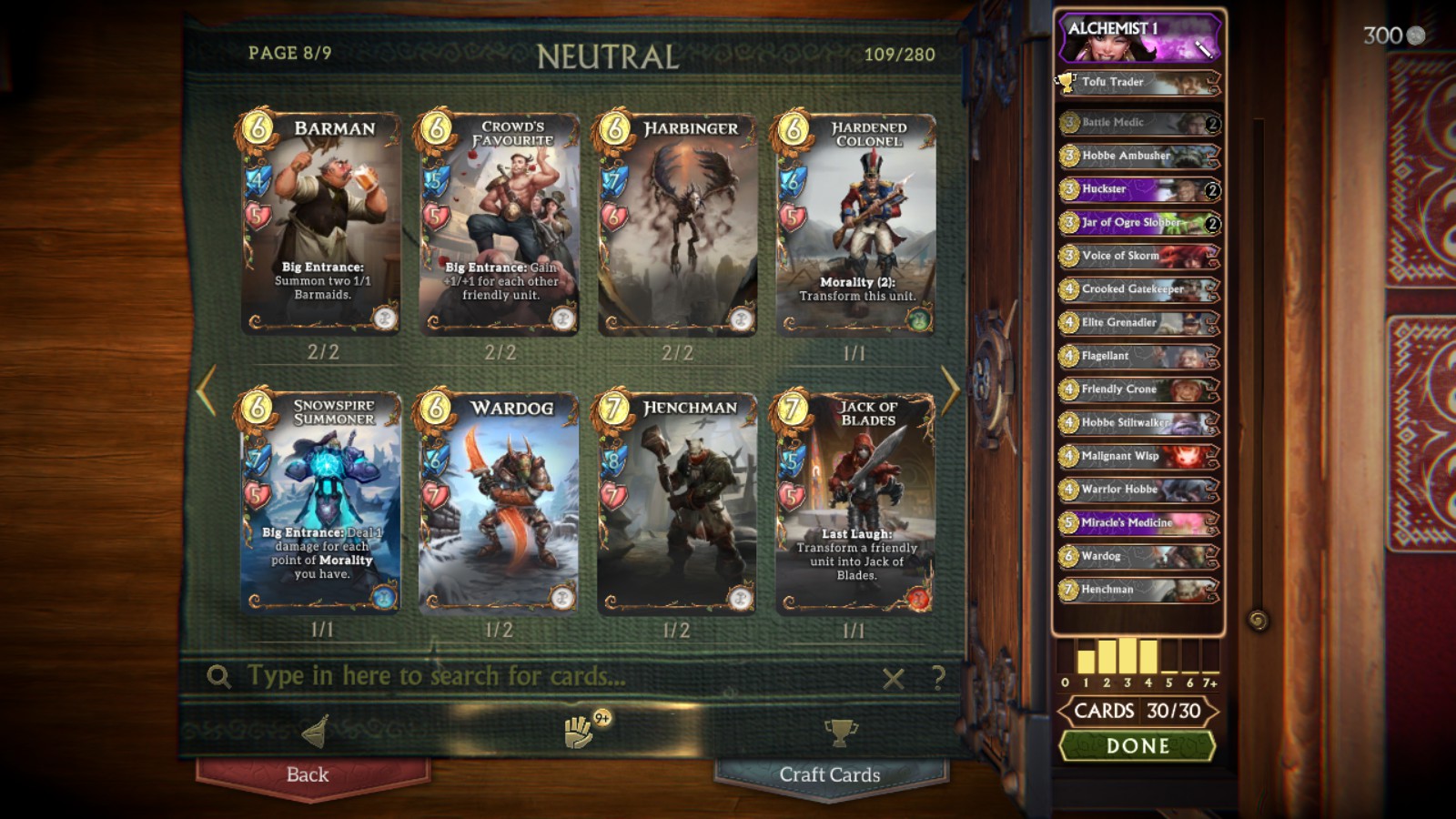
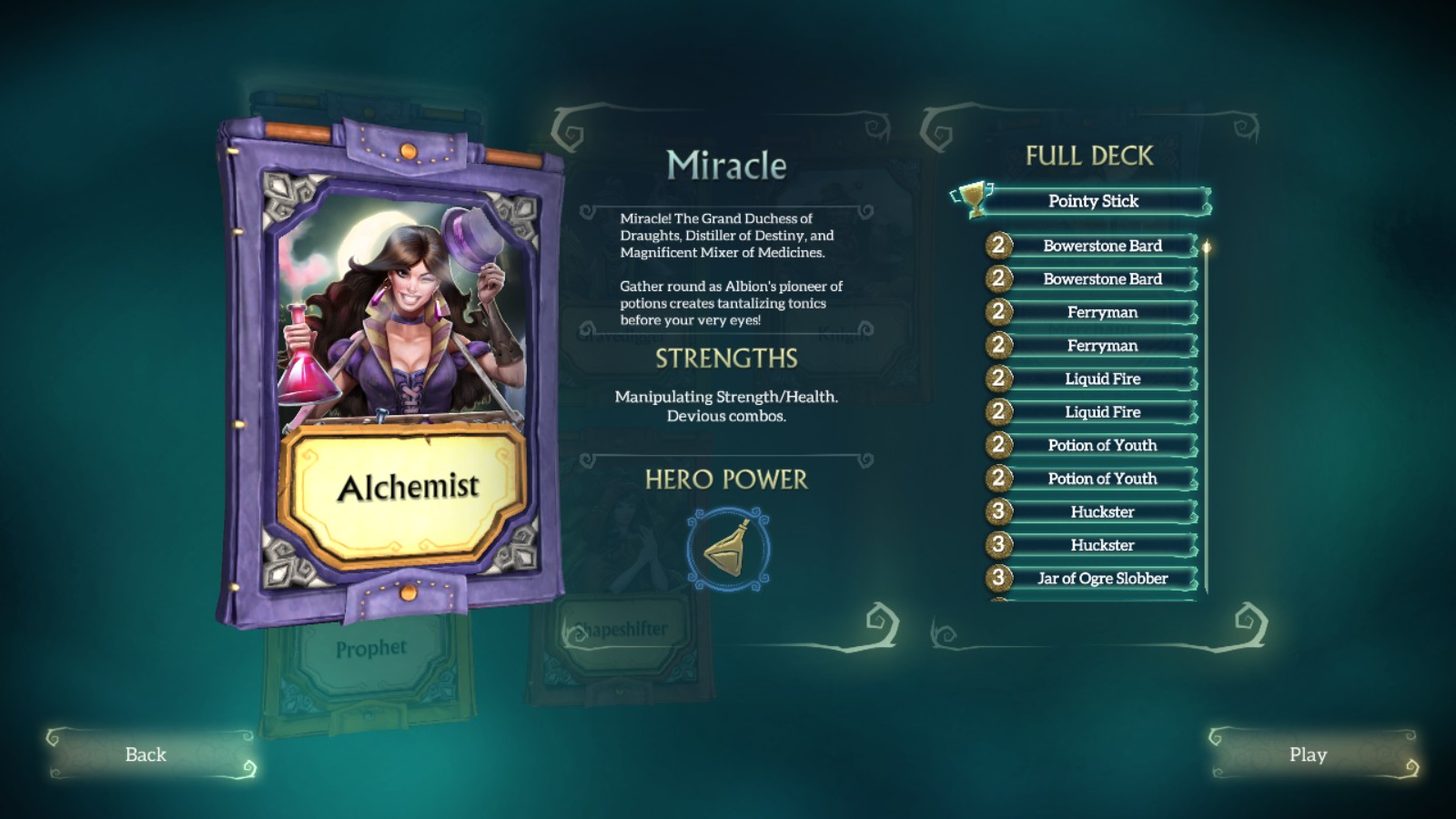
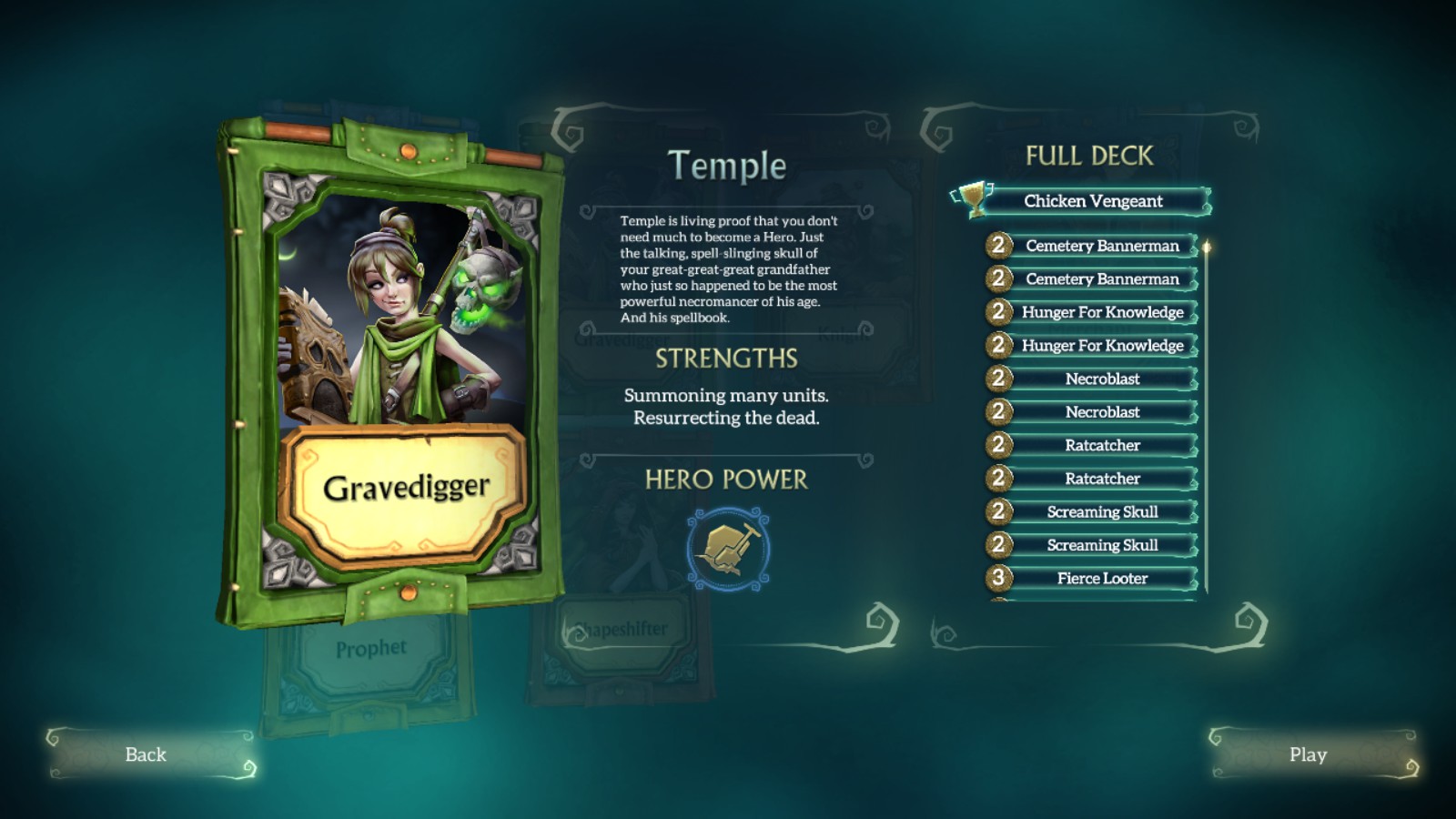
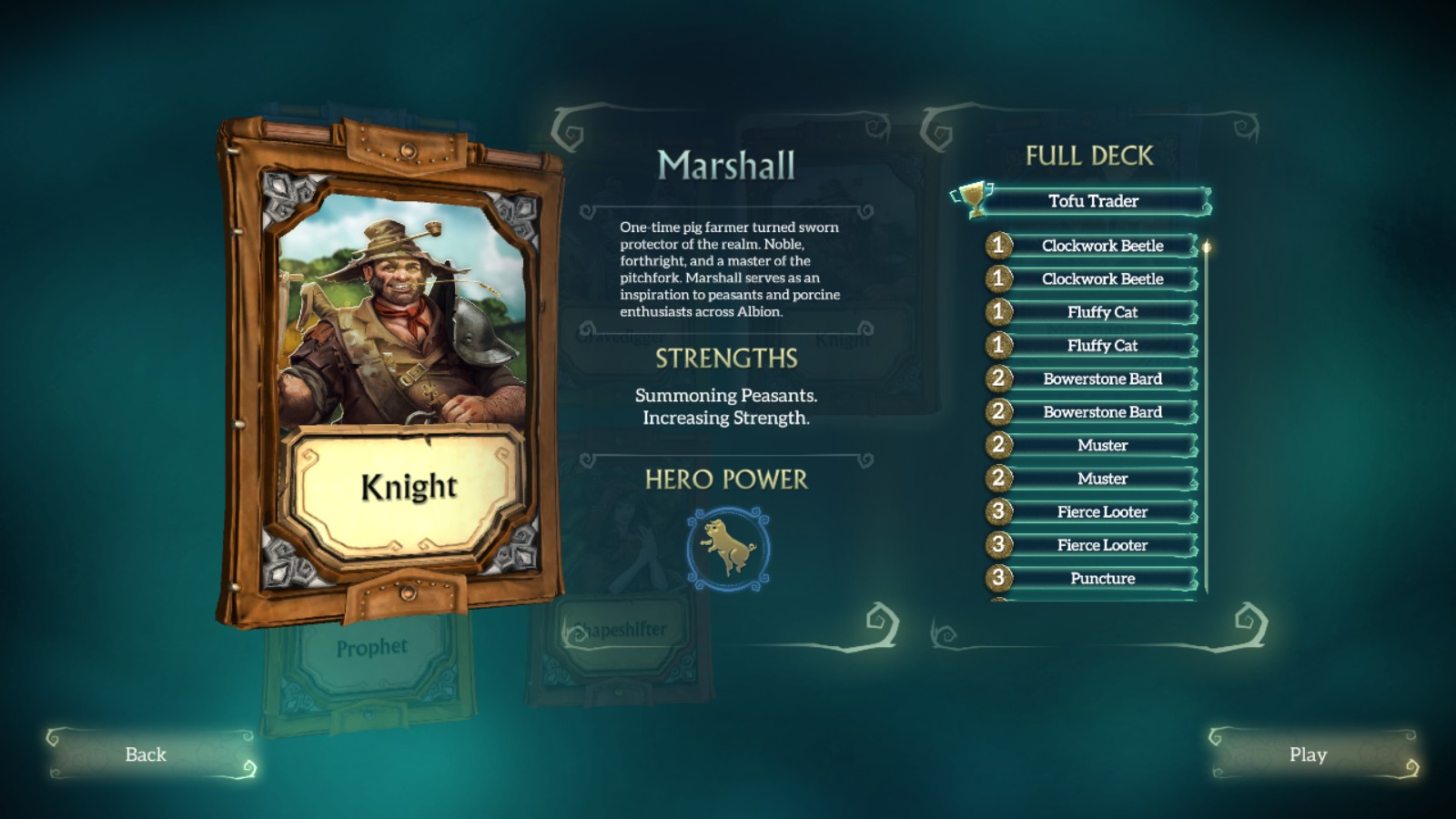
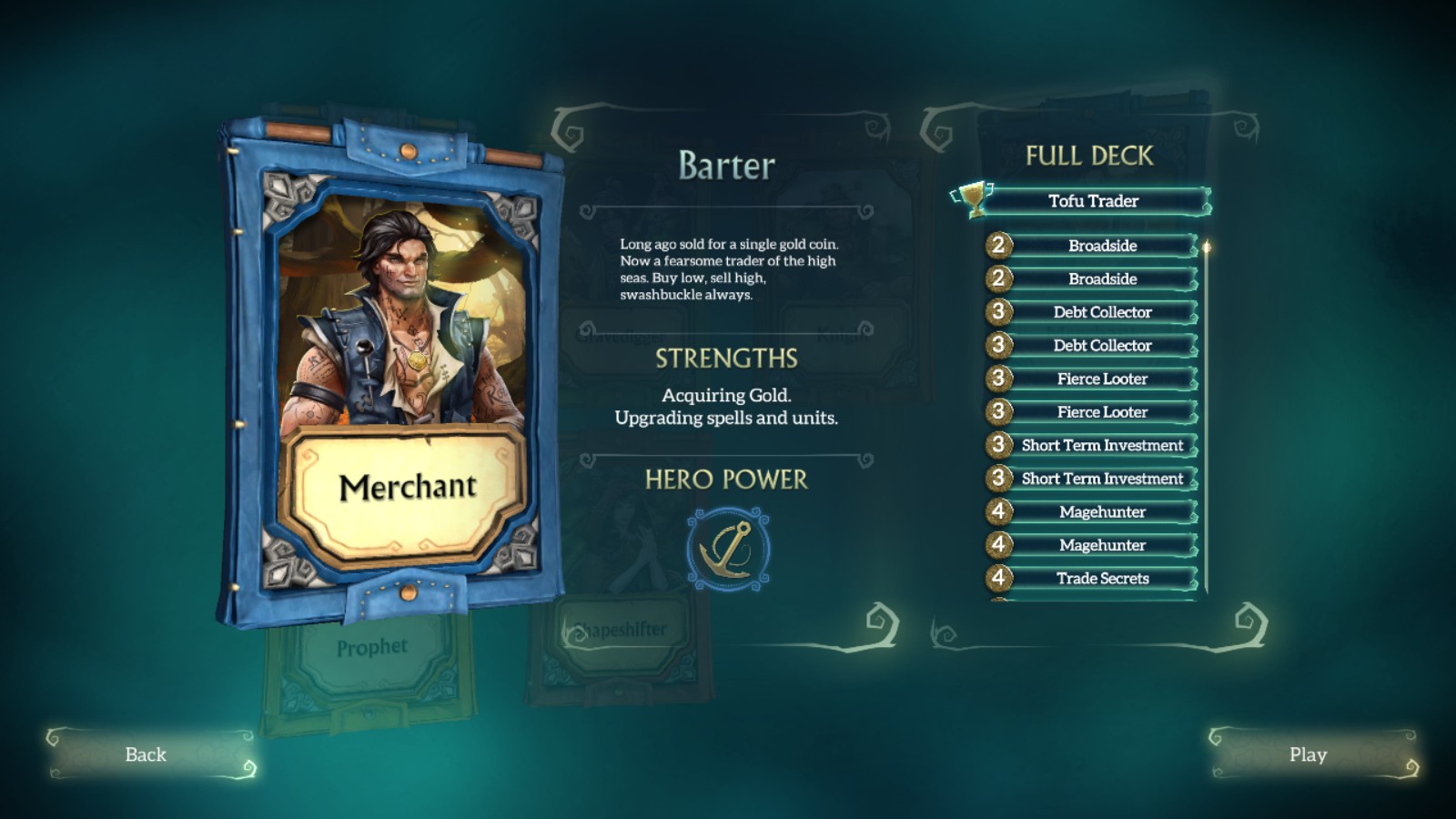
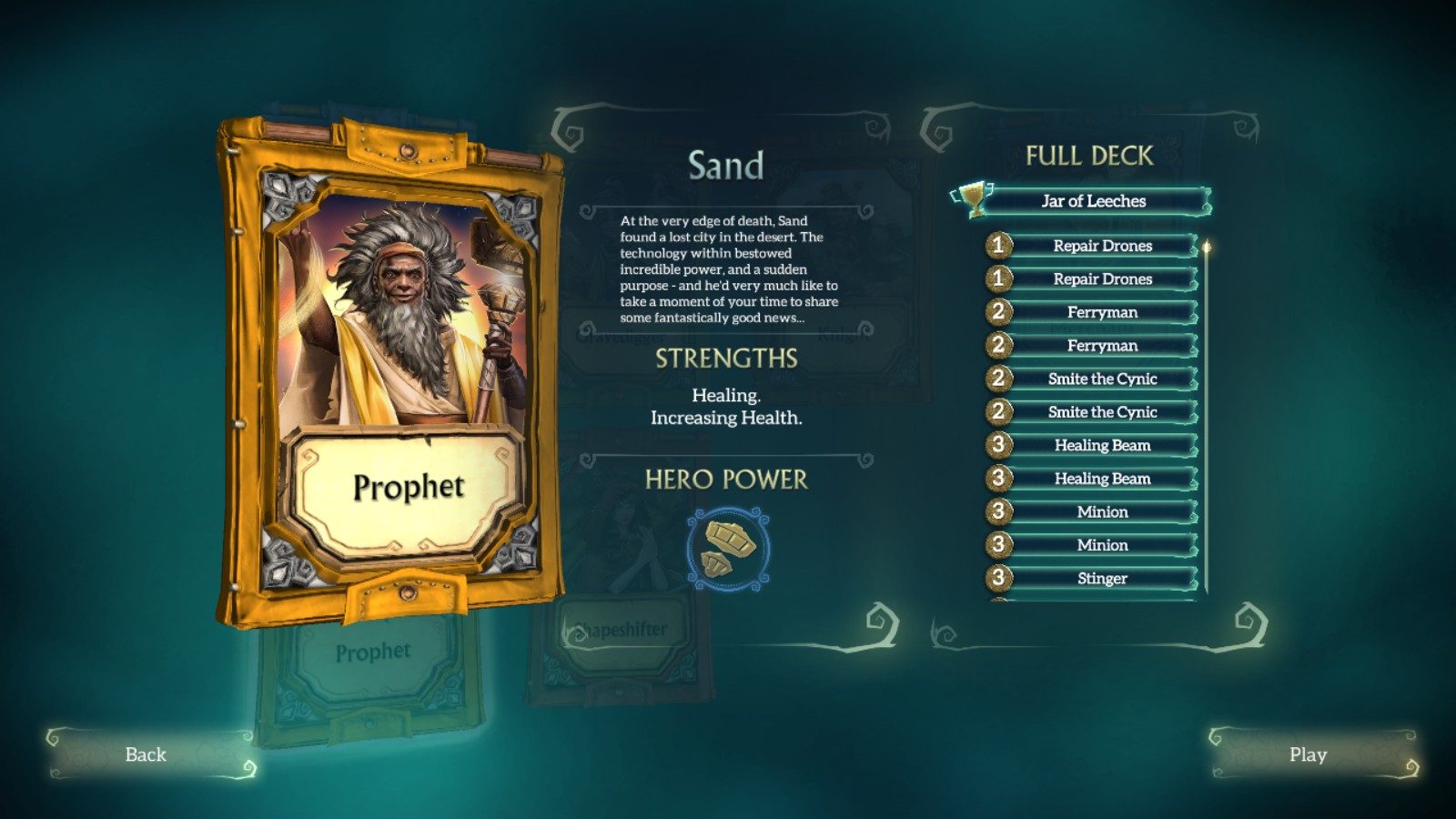
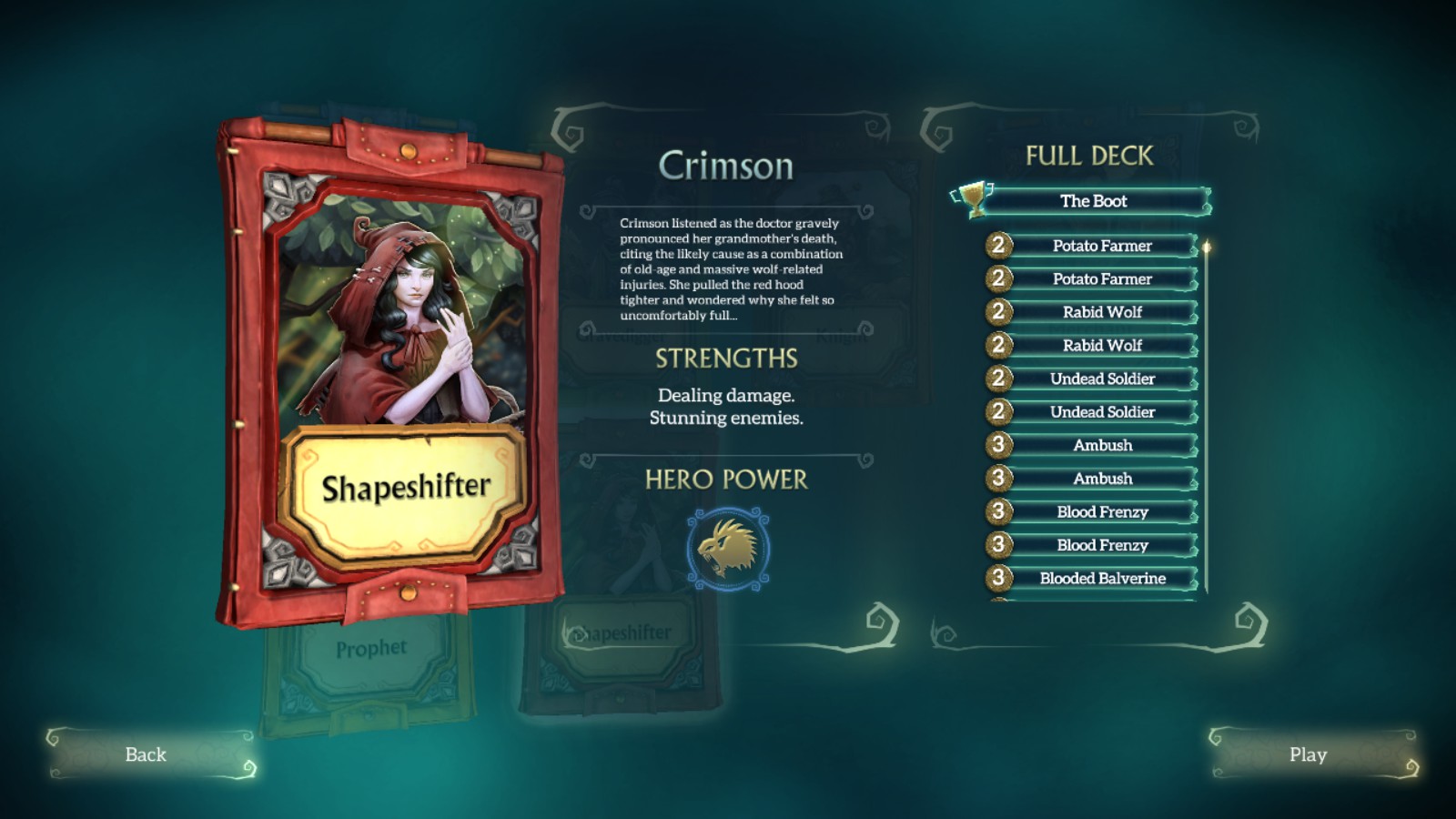
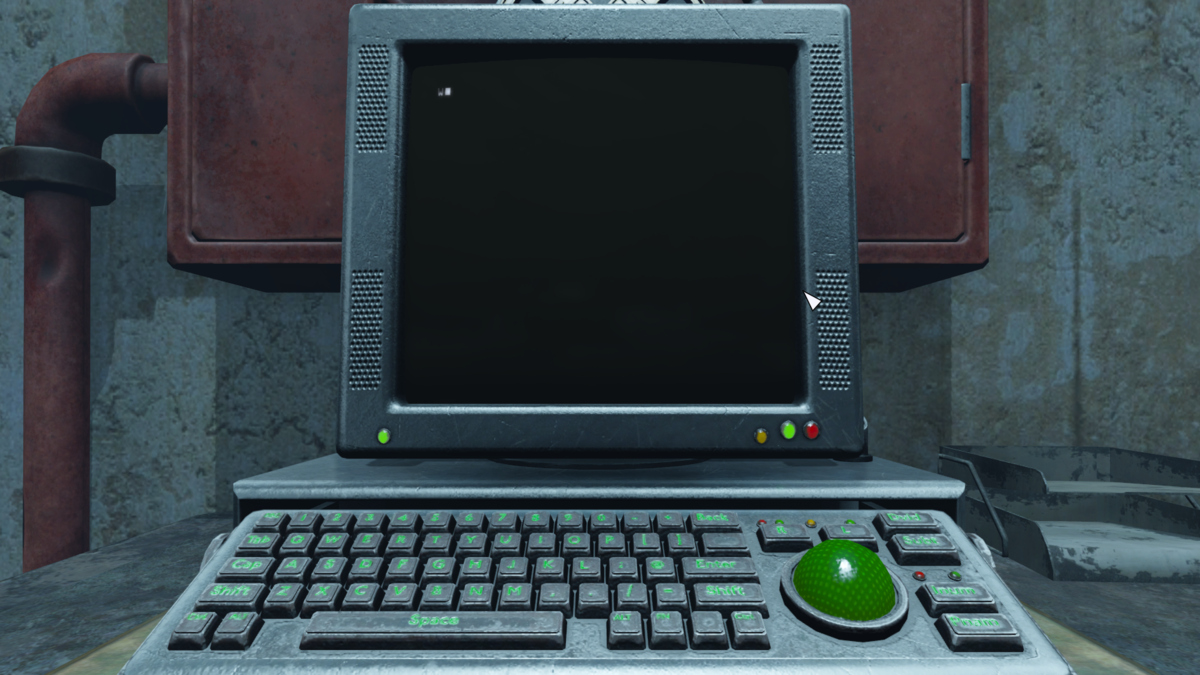


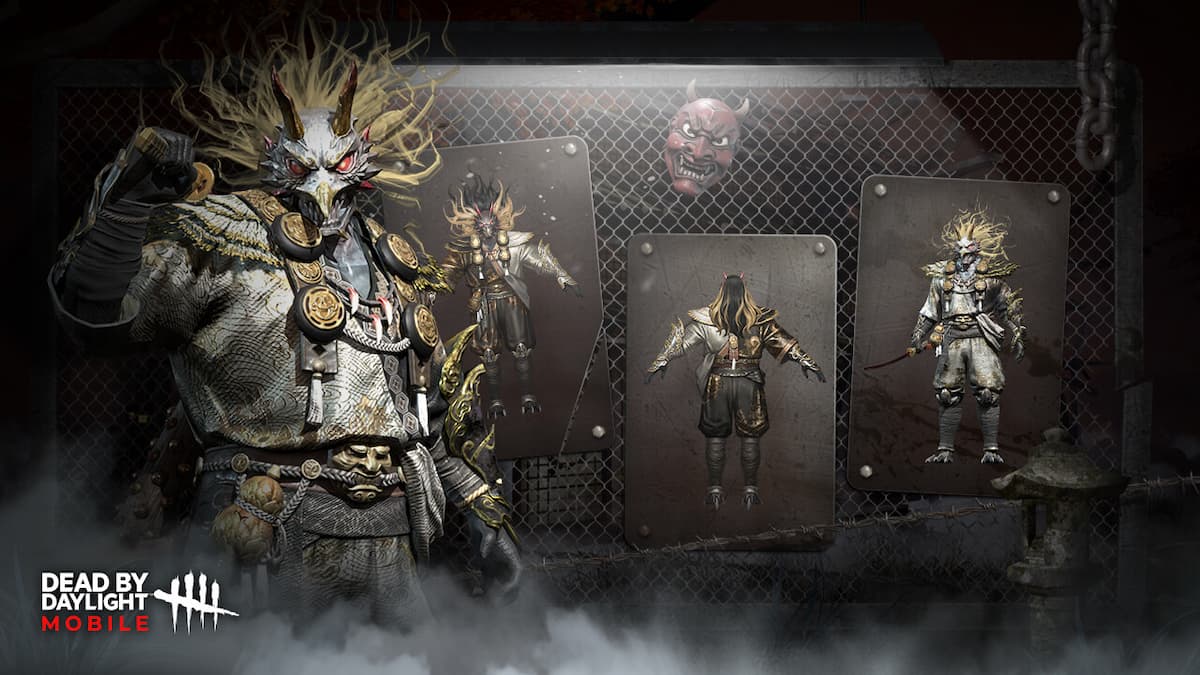
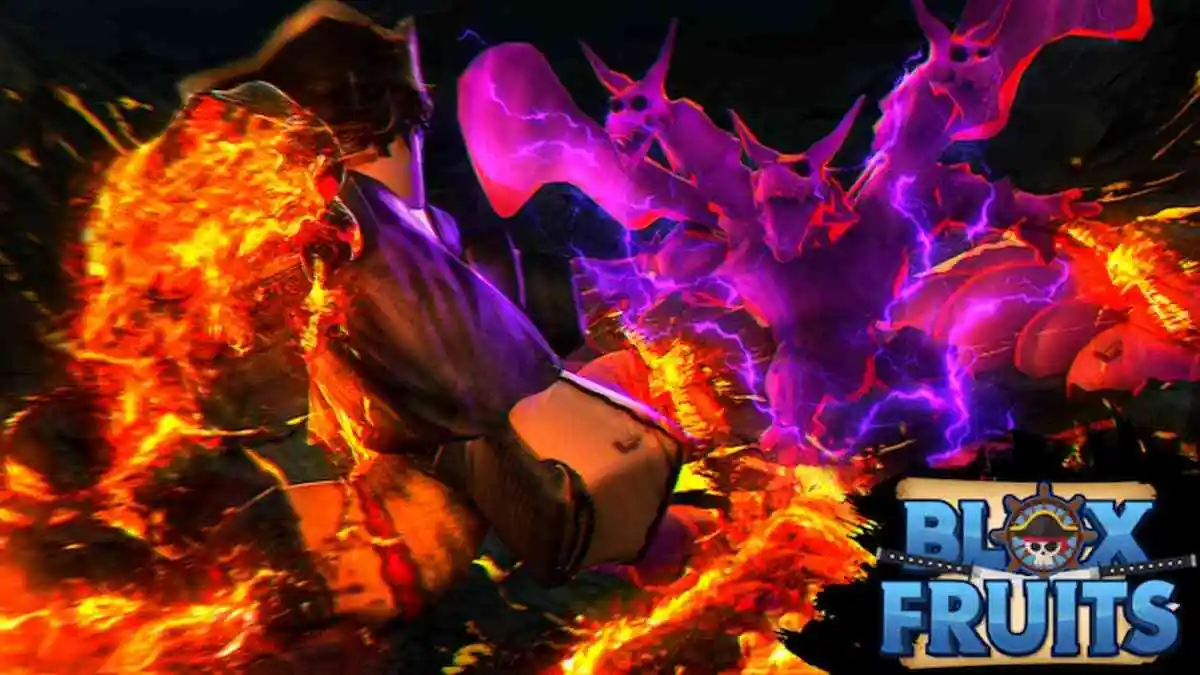
Published: Jul 28, 2017 04:24 pm